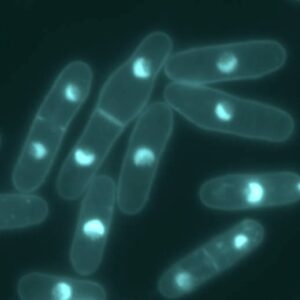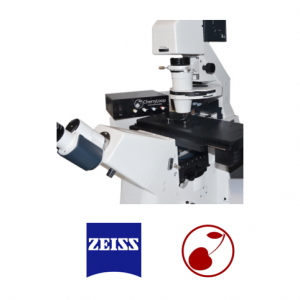Summary
The spindle midzone—composed of antiparallel microtubules, microtubule-associated proteins (MAPs), and motors—is the structure responsible for microtubule organization and sliding during anaphase B. In general, MAPs and motors stabilize the midzone and motors produce sliding. We show that fission yeast kinesin-6 motor klp9p binds to the microtubule antiparallel bundler ase1p at the midzone at anaphase B onset. This interaction depends upon the phosphorylation states of klp9p and ase1p. The cyclin-dependent kinase cdc2p phosphorylates and its antagonist phosphatase clp1p dephosphorylates klp9p and ase1p to control the position and timing of klp9p-ase1p interaction. Failure of klp9p-ase1p binding leads to decreased spindle elongation velocity. The ase1p-mediated recruitment of klp9p to the midzone accelerates pole separation, as suggested by computer simulation. Our findings indicate that a phosphorylation switch controls the spatial-temporal interactions of motors and MAPs for proper anaphase B, and suggest a mechanism whereby a specific motor-MAP conformation enables efficient microtubule sliding.
Publication source
- Source : amet, consectetur adipiscing elit. Ut elit tellus, luctus nec ullamcorper mattis, pulvinar dapibus leo.
- Paper title : Phospho-regulated interaction between kinesin-6 Klp9p and microtubule bundler Ase1p promotes spindle elongation (Chuanhai Fu 1, Jonathan J Ward, Isabelle Loiodice, Guilhem Velve-Casquillas, Francois J Nedelec, Phong T Tran), 2009



